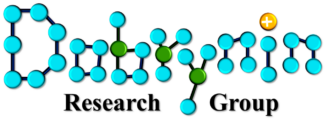Zhen Cao and Andrey V. Dobrynin
The ability of nanoparticles to remain adsorbed at an interface between two soft materials makes it possible to use them as efficient adhesives. Using a combination of the molecular dynamics simulations and theoretical calculations, we establish conditions for different regimes of interfacial confinement of nanoparticles between two polymeric gels. Depending on the relative strength of the capillary and elastic forces acting on a nanoparticle in contact with substrates, a nanoparticle could be in the bridging, the Pickering, or the submerged state. The work of adhesion for a nanoparticle reinforced interface was derived analytically and obtained in simulations from the potential of mean force for separation of two gels. Simulations show that the work required for separation of two gels with nanoparticles confined at interface could be up to 10 times larger than the work of adhesion between two neat gels without the nanoparticle reinforcement. These results provide a valuable insight in understanding the mechanism of gluing soft materials, including gels and biological tissues, by nano- and microsize particles.

